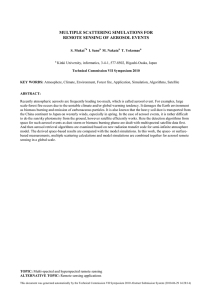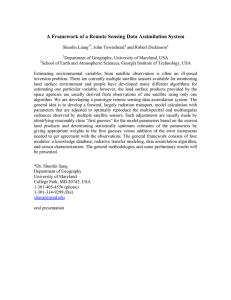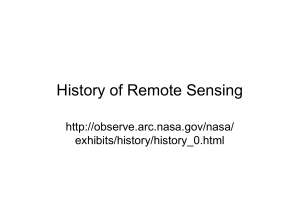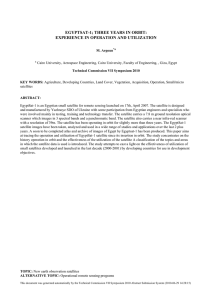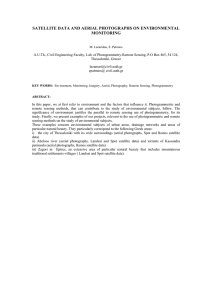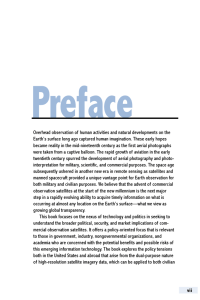Review of “Remote Sensing of Particulate Pollution 1 from
advertisement
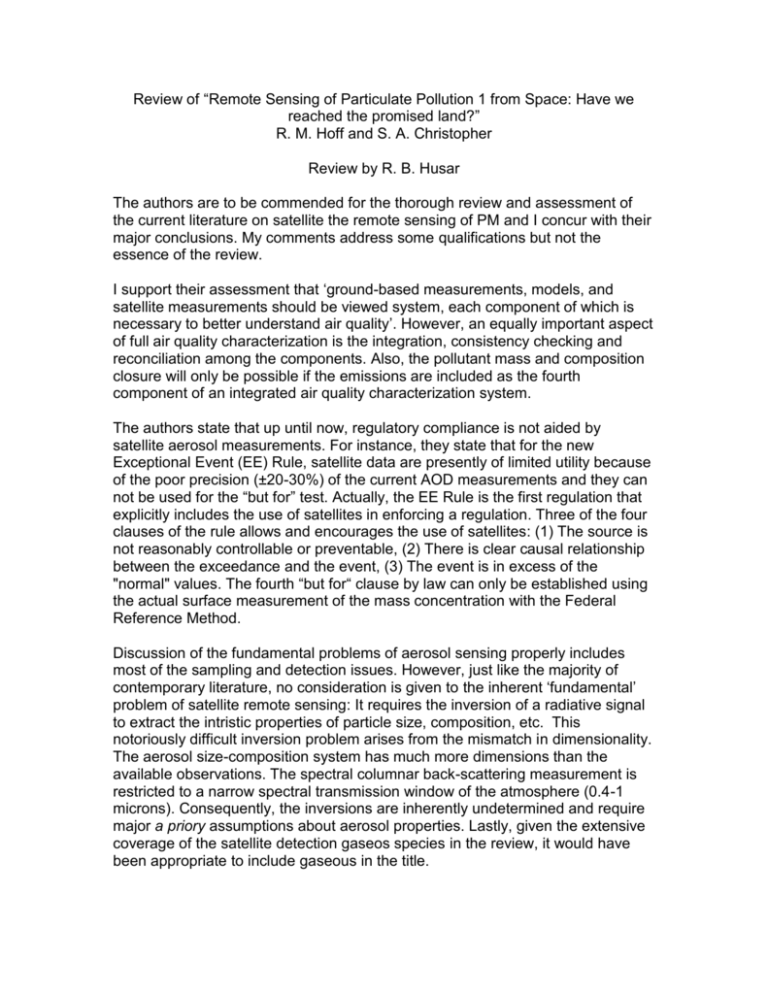
Review of “Remote Sensing of Particulate Pollution 1 from Space: Have we reached the promised land?” R. M. Hoff and S. A. Christopher Review by R. B. Husar The authors are to be commended for the thorough review and assessment of the current literature on satellite the remote sensing of PM and I concur with their major conclusions. My comments address some qualifications but not the essence of the review. I support their assessment that ‘ground-based measurements, models, and satellite measurements should be viewed system, each component of which is necessary to better understand air quality’. However, an equally important aspect of full air quality characterization is the integration, consistency checking and reconciliation among the components. Also, the pollutant mass and composition closure will only be possible if the emissions are included as the fourth component of an integrated air quality characterization system. The authors state that up until now, regulatory compliance is not aided by satellite aerosol measurements. For instance, they state that for the new Exceptional Event (EE) Rule, satellite data are presently of limited utility because of the poor precision (±20-30%) of the current AOD measurements and they can not be used for the “but for” test. Actually, the EE Rule is the first regulation that explicitly includes the use of satellites in enforcing a regulation. Three of the four clauses of the rule allows and encourages the use of satellites: (1) The source is not reasonably controllable or preventable, (2) There is clear causal relationship between the exceedance and the event, (3) The event is in excess of the "normal" values. The fourth “but for“ clause by law can only be established using the actual surface measurement of the mass concentration with the Federal Reference Method. Discussion of the fundamental problems of aerosol sensing properly includes most of the sampling and detection issues. However, just like the majority of contemporary literature, no consideration is given to the inherent ‘fundamental’ problem of satellite remote sensing: It requires the inversion of a radiative signal to extract the intristic properties of particle size, composition, etc. This notoriously difficult inversion problem arises from the mismatch in dimensionality. The aerosol size-composition system has much more dimensions than the available observations. The spectral columnar back-scattering measurement is restricted to a narrow spectral transmission window of the atmosphere (0.4-1 microns). Consequently, the inversions are inherently undetermined and require major a priory assumptions about aerosol properties. Lastly, given the extensive coverage of the satellite detection gaseos species in the review, it would have been appropriate to include gaseous in the title.
